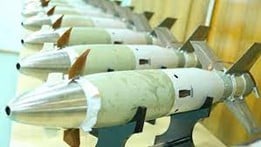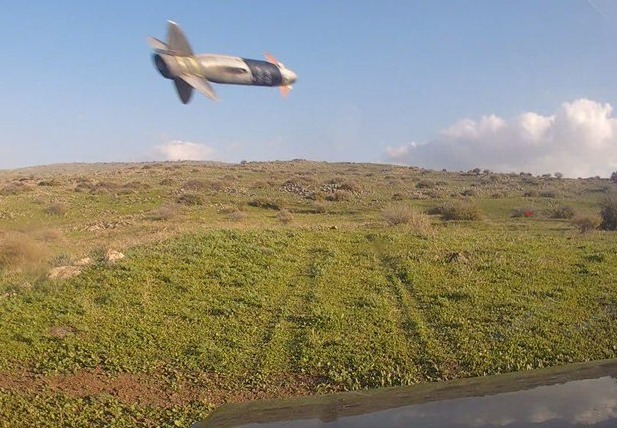By: Yair Ramati and Yaakov Lappin
Hezbollah’s January 6 attack on the Air Force’s Air Control Unit base on Mount Meron, using a barrage of rockets and several long-range anti-tank missiles (ATGM) of the Kornet model, serves as a reminder of the vulnerability of stationary Air Force sites to precision-guided munition (PGM) from adversaries, mainly Hezbollah and Iran.
On January 14, during a speech, Hezbollah Secretary-General Hassan Nasrallah boasted that his organization attacked the Meron base with 62 rockets and missiles, of which 40 were Katyusha rockets and 22 were anti-tank missiles of the Kornet type with an improved range, adding that “18 of the Kornet missiles hit their targets.”
During the attack, Hezbollah apparently used the Iranian version of a Russian anti-tank missile (ATGM), the long-range Kornet model,[i] known as the EM (Extended Missile). This missile has two models: the first with a range of 8 km with a tandem anti-tank warhead (tandem is a double warhead intended to overcome active protection), and the second with a range of 10 km with a high-explosive/thermobaric warhead (which creates severe damage through high temperatures and shockwaves, particularly effective in closed spaces).


The Iranian version of the Kornet missile, dubbed Dehlavieh (Iran Press).
The following day, Hezbollah released a video showing at least two hits on the domes protecting the radars on Mount Meron. While we do not know the extent of damage caused, there is no doubt that the potential for damage is great, which could take such systems out of commission for a period of time.
The question immediately arises: Why is this critical Air Force site not protected by a net, a smoke screen, or even active or other electronic/electro-optical defense systems?
From a broader perspective, several associated questions arise about the resilience and survivability of the rest of the Israeli Air Force’s stationary facilities against precision stand-off munitions. On one hand, there is no dispute over the power projection, versatility, and central control of the IAF, but on the other hand, its weakness is related to its absolute dependence on a number of fixed, well-known, and targeted sites.
Some of these critical sites are vulnerable to the strikes of stand-off precision-guided munitions: From guided missiles and rockets (with guidance kits from Iran) to various cruise missiles and UAVs that can appear from any direction.
When it comes to an attack by two or three missiles, such an event can be handled, but when it comes to dozens of simultaneously incoming missiles on each critical site, this becomes problematic. The pace of Hezbollah’s and others’ advancement in acquiring precise weaponry systems is consistent, systematic, and quite rapid. It’s only a matter of time before they possess many thousands of such precision-guided munitions.
On January 6, the Air Force encountered a relatively esoteric and short-range threat when the direction of the anti-tank missile attack, moving in a straight line, was known in advance. In Hezbollah’s attack footage, the professional use of Google Earth tools and satellite images is also noticeable.
While active defense is a complex and expensive story (it is apparently not possible to protect all of the Force’s systems at its bases with active defenses), soft defenses and sometimes simple ones like smoke are within reach and reasonably priced, especially for bases near the enemy or areas adjacent to the West Bank and Gaza.
At the strategic level, the question arises: What is the optimal middle way for Israel to cope with a precise long-range threat on several sites simultaneously, in a coordinated combination of flat and steep trajectory weaponry, and in significant quantities?
It can be assumed that the Iron Dome and David’s Sling air defense systems will intercept a high percentage of these threats, and if we imagine about 100 missiles, the result will probably be reasonable. But if thousands of missiles and UAVs are launched, this could pose a challenge to the operational continuity of the Air Force. For example, consider the survival of scattered detection systems in the country.
It should be noted that a similar, though not necessarily identical, challenge also faces the Israeli Navy, which can learn a thing or two from Ukraine’s deep attacks against Russian ports in the Black Sea.
Perhaps, in light of the above, the time has come to reconsider the idea of establishing an ‘IDF Missile Corps’, with independent launching capability under the Air Force or another branch.
A land-based missile system has several advantages beyond its low signature on the ground: it operates immediately in terms of minutes, on command, requires a small operating and maintenance crew, flies in all weather, does not endanger aircrews, and more. With its advantages and disadvantages, this additional capability is an excellent opportunity to complement the manned array (fighter jets, helicopters, and UAVs) while decreasing and dispersing the strategic risks to which the State of Israel is exposed.
The attack on the Air Control Unit at the top of Mount Meron was a sign to re-examine the Air Force’s defense and attack systems in light of the evolving precise threats.
*Yair Ramati is the former Director of the Israel Missile Defense Organization, the Defense Ministry agency in charge of the development, production, and delivery of missile defense systems to the State of Israel.
*Yaakov Lappin is a research associate at the Alma Center, an in-house analyst at the Miryam Institute, and a military correspondent at JNS.
[i] A 10-year-old Russian prospect






